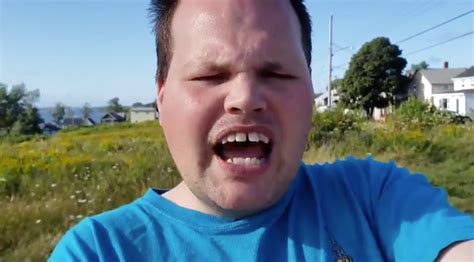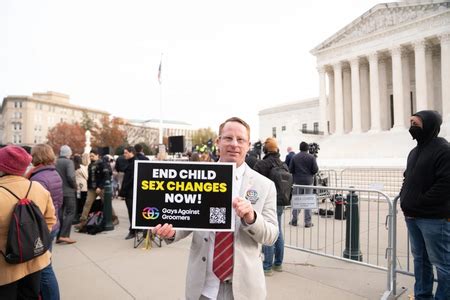
A meteorologist in Florida, Bryan Bennett, delivered an urgent, unscripted warning during a live broadcast on local television, urging viewers to prepare immediately for an impending hurricane threat. Defying the typical format of weather reporting, Bennett stressed the gravity of the situation, emphasizing that standard preparations might not be sufficient given the potential severity of the storm.
Bryan Bennett, the WEATHerman from WTVY, alarmed viewers with his on-air urgency about an approaching hurricane. He deviated from the planned broadcast to highlight the pressing need for residents to prepare. Bennett’s broadcast on WTVY served as a critical intervention, aiming to counteract potential complacency or inadequate readiness among the public.
The Unscripted Warning
During his regular weather segment on WTVY, Bennett took a starkly different approach. Instead of merely presenting forecasts and probabilities, he delivered a passionate plea, urging viewers to take immediate and comprehensive action. “I don’t care what you’ve done to prepare in the past,” Bennett stated emphatically during the broadcast. “If you’re not ready to protect yourself now, it’s on you.” This statement, captured and widely circulated online, underscored his concern that many residents might underestimate the hurricane’s potential impact.
Bennett’s concern was based on the possible underestimation by the viewers of the impending hurricane’s impact. He expressed his concern that prior experiences with hurricanes could breed complacency.
Behind the Urgency
Bennett’s drastic departure from the typical weather report was not a spontaneous decision but a calculated move based on a deep understanding of the region’s vulnerabilities and the possible consequences of inadequate preparation. Having witnessed the destructive power of hurricanes firsthand, Bennett knew the difference between being prepared and being caught off guard could be a matter of life and death.
According to the Yahoo News report, Bennett’s impassioned plea resonated widely, with many viewers expressing appreciation for his directness. While his approach was unconventional, it underscored the critical role local media plays in disseminating vital information during emergencies.
Community Impact and Response
The immediate reaction to Bennett’s warning was varied, but largely positive. Many residents took to social media to express their gratitude for his candor, acknowledging that his message served as a wake-up call. Others, however, questioned his alarmist tone, suggesting that it could incite unnecessary panic.
Nevertheless, local emergency management agencies noted a significant uptick in preparedness activities following the broadcast. Shelters reported increased inquiries, and stores saw a surge in sales of essential supplies like water, batteries, and non-perishable food.
Expert Opinions on Hurricane Preparedness
Emergency management experts generally agree on the essential steps for hurricane preparedness, which include:
- Developing an Evacuation Plan: Identify safe evacuation routes and destinations, especially for those living in coastal or low-lying areas.
- Assembling a Disaster Kit: Stock up on essential supplies, including water, non-perishable food, medications, first-aid supplies, flashlights, batteries, and a manual can opener.
- Securing Your Home: Reinforce windows and doors, trim trees and shrubs, and secure loose outdoor items that could become projectiles in high winds.
- Staying Informed: Monitor weather reports and heed warnings from local authorities.
- Knowing Your Risk: Understand the potential impacts of hurricanes in your area, including flooding, storm surge, and high winds.
The Role of Local Media in Crisis Communication
Local media outlets play a vital role in communicating vital information during crises. Meteorologists like Bennett are often the most trusted sources of information during severe weather events. Their ability to convey complex weather data in an understandable way can significantly impact public safety.
However, the responsibility of local media extends beyond merely reporting forecasts. It involves providing context, explaining potential impacts, and motivating the public to take appropriate action. Bennett’s decision to deviate from the script highlights the importance of this role, demonstrating that sometimes, a personal and direct approach can be the most effective way to reach people.
The Debate on Alarmism vs. Preparedness
The fine line between informing the public and causing unnecessary panic is a constant challenge for meteorologists and emergency responders. While it is essential to convey the potential severity of a threat, it is equally important to avoid exaggerating the risk.
Critics of Bennett’s approach argued that his language was too strong and could lead to panic buying and unnecessary evacuations. Proponents, however, maintained that his urgency was justified, given the potential consequences of being unprepared.
The consensus among emergency management professionals is that preparedness is always better than complacency. While it is crucial to avoid causing undue alarm, it is equally vital to ensure that people understand the risks and take appropriate action to protect themselves and their families.
Historical Context of Hurricanes in Florida
Florida is no stranger to hurricanes, with a long and devastating history of being impacted by these powerful storms. From the Great Miami Hurricane of 1926 to Hurricane Andrew in 1992 and more recently, Hurricane Ian in 2022, the state has experienced countless instances of destruction and loss.
These historical events have shaped the way Floridians approach hurricane season, fostering a culture of preparedness and resilience. However, each new storm brings unique challenges, and complacency can quickly erode the hard-won lessons of the past.
Long-Term Implications of Climate Change on Hurricane Activity
Scientists have long warned that climate change is likely to intensify hurricane activity, leading to stronger storms, higher storm surges, and increased rainfall. While it is difficult to attribute any single hurricane directly to climate change, the overall trend is clear.
Warmer ocean temperatures provide more energy for hurricanes, allowing them to grow stronger and more intense. Rising sea levels exacerbate storm surge, increasing the risk of coastal flooding. Changes in atmospheric patterns can also alter hurricane tracks, potentially bringing storms to areas that have historically been less vulnerable.
The Economic Impact of Hurricanes
Hurricanes can have a devastating impact on local economies, causing billions of dollars in damage to homes, businesses, and infrastructure. The costs of recovery can be enormous, placing a strain on government resources and hindering long-term development.
In addition to direct damage, hurricanes can also disrupt supply chains, leading to shortages of essential goods and services. Tourism, a vital industry in many coastal areas, can be severely affected, with visitors canceling trips and businesses temporarily closing.
The Psychological Impact of Hurricanes
Beyond the physical and economic impacts, hurricanes can also take a significant toll on mental health. The stress and anxiety associated with preparing for a storm, the trauma of experiencing its destructive force, and the challenges of recovery can all contribute to psychological distress.
Many hurricane survivors experience symptoms of post-traumatic stress disorder (PTSD), including flashbacks, nightmares, and anxiety. Children are particularly vulnerable, and their emotional well-being should be a top priority during and after a hurricane.
Mitigation Strategies for Reducing Hurricane Risk
While it is impossible to prevent hurricanes from occurring, there are several strategies that can be employed to reduce their impact:
- Strengthening Building Codes: Implementing and enforcing stricter building codes can help ensure that homes and businesses are more resilient to high winds and flooding.
- Investing in Infrastructure: Improving infrastructure, such as seawalls, levees, and drainage systems, can help protect coastal communities from storm surge and flooding.
- Restoring Coastal Ecosystems: Protecting and restoring coastal ecosystems, such as mangroves and wetlands, can provide a natural buffer against storm surge and erosion.
- Implementing Land-Use Planning: Carefully planning land use can help minimize development in vulnerable areas and reduce the risk of damage.
- Educating the Public: Raising public awareness about hurricane risks and preparedness measures can empower individuals to take action to protect themselves and their families.
The Importance of Community Resilience
Ultimately, the ability of a community to withstand and recover from a hurricane depends on its resilience. This includes not only physical infrastructure but also social networks, community organizations, and a shared sense of purpose.
Communities that are well-organized, have strong leadership, and foster a culture of cooperation are better equipped to cope with the challenges of a hurricane. By working together, residents can help each other prepare, respond, and recover from these devastating events.
The Role of Technology in Hurricane Preparedness
Advancements in technology have significantly improved our ability to predict, track, and prepare for hurricanes. Satellites, radar, and computer models provide valuable data that help meteorologists forecast the path and intensity of storms.
Mobile apps and social media platforms allow emergency managers to disseminate vital information quickly and efficiently. These tools can help residents stay informed, receive warnings, and connect with resources during and after a hurricane.
The Future of Hurricane Forecasting and Preparedness
Continued research and development are essential for improving our understanding of hurricanes and enhancing our ability to forecast and prepare for them. This includes:
- Developing more accurate and reliable forecasting models: Scientists are working to improve the accuracy of hurricane forecasting models, allowing for more timely and effective warnings.
- Improving our understanding of hurricane intensification: Research is ongoing to better understand the factors that contribute to rapid hurricane intensification, a phenomenon that can catch forecasters and the public off guard.
- Developing new technologies for monitoring and measuring hurricanes: Scientists are developing new technologies, such as drones and underwater sensors, to collect data from inside hurricanes, providing valuable insights into their behavior.
- Enhancing public awareness and education: Continued efforts are needed to raise public awareness about hurricane risks and preparedness measures, ensuring that everyone has the knowledge and tools they need to stay safe.
Conclusion
Bryan Bennett’s impassioned plea for hurricane preparedness serves as a reminder of the importance of taking these storms seriously. While his approach may have been unconventional, it underscores the critical role that local media plays in disseminating vital information during emergencies. By staying informed, taking appropriate action, and working together as a community, we can all help reduce the impact of hurricanes and protect ourselves and our families. As the climate continues to change and hurricane activity intensifies, preparedness will become even more critical in the years to come.
Frequently Asked Questions (FAQ)
1. Why did the weatherman deliver an unscripted warning?
The weatherman, Bryan Bennett, delivered an unscripted warning because he felt the need to emphasize the urgency of hurricane preparedness. He believed that standard preparations might not be sufficient and wanted to ensure residents took immediate action to protect themselves. He stated he didn’t care what preparedness efforts viewers undertook in the past, what mattered was being prepared right now.
2. What specific actions did the weatherman urge viewers to take?
While the article doesn’t provide an exhaustive list, Bennett’s main message was to prepare now. This implicitly includes all standard hurricane preparedness measures, such as developing an evacuation plan, assembling a disaster kit, securing your home, and staying informed. The core message was about the immediate need to prepare, rather than complacency based on past hurricane experiences.
3. What was the public’s reaction to the weatherman’s warning?
The public reaction was varied. Many expressed gratitude for his directness and saw it as a wake-up call. Others questioned his alarmist tone, suggesting it could incite unnecessary panic. However, there was a noted increase in preparedness activities following the broadcast, such as increased inquiries at shelters and a surge in sales of essential supplies.
4. What is the role of local media during a hurricane threat?
Local media plays a vital role in communicating crucial information, providing context, explaining potential impacts, and motivating the public to take appropriate action. Meteorologists like Bennett are often trusted sources of information during severe weather events. Their ability to convey complex weather data in an understandable way can significantly impact public safety.
5. How does climate change affect hurricane activity?
Scientists warn that climate change is likely to intensify hurricane activity, leading to stronger storms, higher storm surges, and increased rainfall. Warmer ocean temperatures provide more energy for hurricanes, allowing them to grow stronger. Rising sea levels exacerbate storm surge, increasing the risk of coastal flooding.









